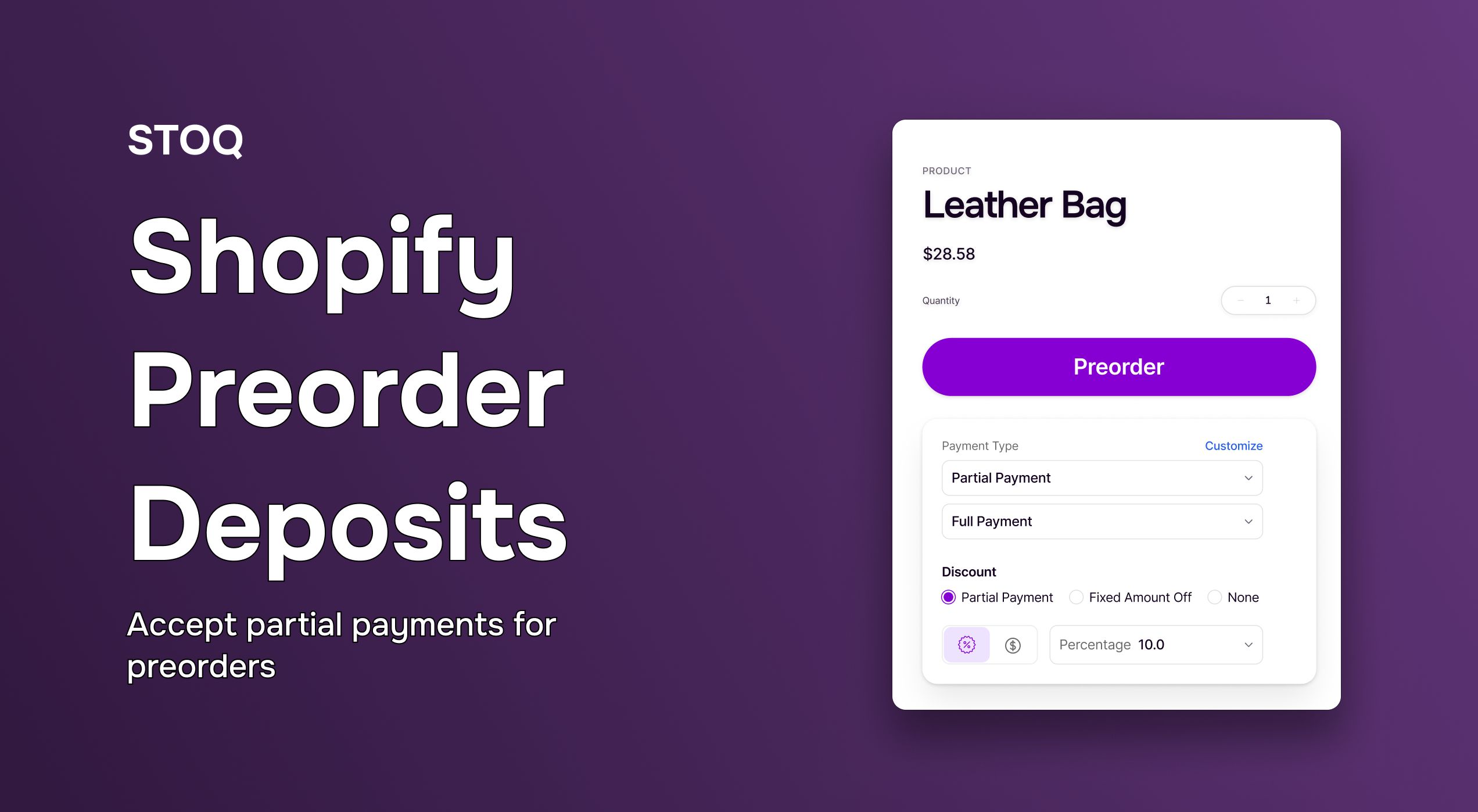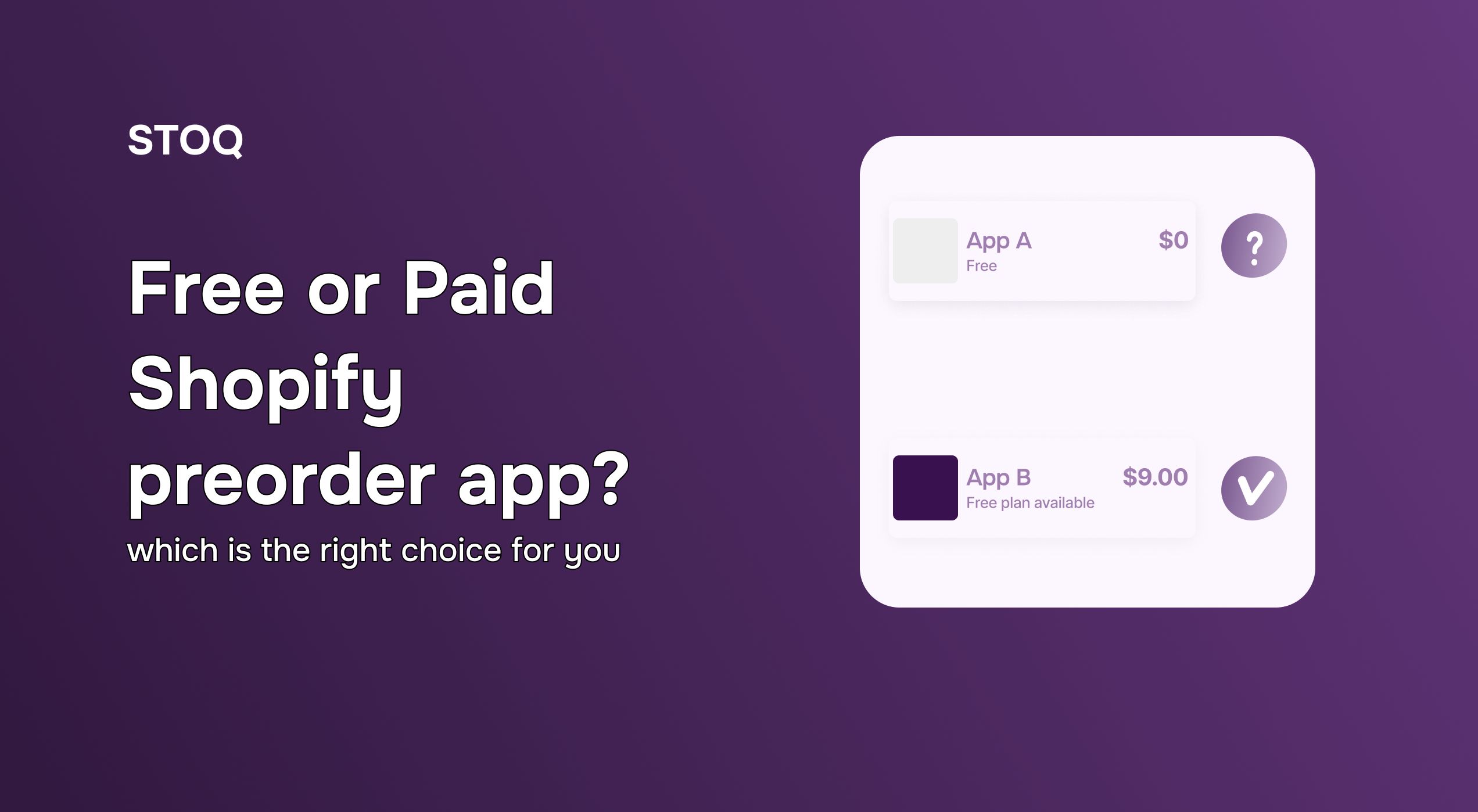Preorders vs. Back-in-Stock Shopify Strategy: Which Strategy Is Best for Your Store?

Many shopping disruptions are caused by stock-related issues. For example, stockouts, dispatch delays, and supply chain issues, among others.
To combat this issue and recover lost sales, eCommerce merchants are implementing preorder and back-in-stock features.
In this blog, we look at how preorder vs back-in-stock Shopify strategies in detail. However, which of these strategies you should choose depends on factors, such as your business goals, product type, and operations, etc.
Read this blog to decide which of these two strategies you should choose for your Shopify store.
What are Shopify pre orders and how do they work?
Pre order is a feature through which eCommerce merchants can enable customers to place orders for products and services before they get physically available. For example, Apple’s iPhones are available for pre-order before the new models are officially launched and available.

Let’s look at the basics of pre-orders:
- Payments: Payment can be made upfront, partially, or at the time of delivery, based on how merchants plan payments.
- Pre-order use cases: New product launches, when there’s a high demand for products, or for seasonal stocks that are about to be available.
- Pre-order set up: ECommerce merchants use various tools to set up and automate pre-orders on their website.
What are Shopify back-in-stock alerts and how do they work?
When products are restocked in the inventory, eCommerce merchants notify customers by sending them alerts to inform them that the products are back in stock. Customers can opt to receive back-in-stock alerts by sharing their contact details. For example, you must’ve seen the Shopify ‘Notify Me’ button on product pages.

Here are some basics of the back-in-stock feature:
- Ecommerce websites often have the ‘Notify Me’ button for customers to opt in for back-in-stock alerts.
- Use cases for back-in-stock alerts: For recurring purchases, when products stockout, for relaunches and uncertain restocks.
- When customers sign up for Shopify back-in-stock alerts, eCommerce merchants can gauge the demand for a product and plan their inventory stocking accordingly.
- There are many Shopify apps and tools for back-in-stock alerts, for example, STOQ
Preorder vs. back-in-stock: Differences
Pros and cons of implementing Shopify pre order strategies
Here’s a look into the pros and cons of setting up Shopify preorders:
Pros
- Enables capturing demand: As customers start placing pre-orders, merchants get a sense of the demand for that particular product. This helps in many ways - for planning the inventory, for planning sales, future product launches, etc.
- Upfront revenue: Merchants can get revenue to fund inventory. Moreover, as sales are predictable and certain, with pre orders, merchants can reduce overstocking and blocking funds due to inventory.
- Create buzz for new products: With pre orders, you can create promotions and marketing campaigns for the products that are available for pre orders.
Cons
- Delays can cause customer frustration: With pre orders, merchants mention a certain or tentative date of product availability. However, when there’s an unexpected delay, it can lead to customer frustration, and at times, pre order cancellation.
- Requires clear shipping timelines: When customers place pre orders, they expect to know the delivery date for their products. This requires thorough planning by brands to ensure they get the timelines right. Companies that are unsure of an exact delivery date, usually give shipping timelines in months or quarters. Eg: Shipping in Q4, 2025.
- Risk of cancellations: If poorly managed, pre orders can lead to problems, such as delayed delivery, uncertain timelines, etc. This can lead to cancellations. Besides, unhappy customers may never come back for another purchase.
Pros and cons of Shopify back-in-stock strategies
Here’s a look into the pros and cons of setting up Shopify back-in-stock notifications:
Pro
- Low friction for customers: With back-in-stock alerts, there is usually less friction for customers, as they get alerted only when the products are restocked. This helps reduce friction for customers.
- Gauge demand before restocking: When there is a back-in-stock alert option for customers to opt for, merchants can gauge demand before restocking products.
- Easier to manage expectations: Brands can ensure customers’ expectations are met with back-in-stock alerts. Brands can send updates about expected timelines, etc., ensuring customers remain informed.
Cons
- Customers may not purchase: With back-in-stock alerts, there is no guarantee of customers returning to purchase the products. They may change their purchase decisions by the time the products get restocked.
- Delayed revenue collection: Customers are not required to pay for the product before they get restocked, hence, brands cannot generate instant revenue. Brands have to wait till the products become available upon restocking.
- Dependent on restock efficiency: It is critical to manage restocking inventory well. If not managed well or if there is supply chain disruption, it may have a negative impact on back-in-stock campaigns.
Pre order vs. back-in-stock Shopify strategy: How to choose the right strategy for your store?
We recommend using both the strategies in tandem. But here’s how to choose:
When to choose pre orders
- Launching a new product: When launching a new product, pre orders can help brands in many ways. For instance, brands can get the exact number of orders, can plan for marketing and promotions, and create launch promotions.
- When you need upfront capital: Brands that require capital for their business can offer pre orders and generate upfront revenue. Businesses can use this capital for inventory management, and other processes.
- When you have supplier reliability: When you have surety that your supplier is reliable and will deliver goods as per the scheduled date, you can be sure that you will be able to meet your pre order orders.
When to choose back-in-stock alerts
- When you sell recurring items or bestsellers: Certain star items get sold-out fast. If your Shopify store has star items that sell out fast, you can use the back-in-stock alerts to notify customers when products will be restocked.
- When you’re unsure about demand: When you want to get an estimate of the demand for products that you plan to restock, you can set up back-in-stock alerts. By monitoring the number of sign ups for back-in-stock notification, you get a tentative idea and plan better.
- To avoid overstocking: With back-in-stock notification sign-ups, you can predict the amount of stock you will need to restock. This helps to avoid overstocking and over investing in the inventory stock.
When should you use both pre orders and back-in-stock alerts?
While both these strategies have advantages, you may not require to implement both in your Shopify store. The strategy you choose depends on factors such as the type of products, customer response, and business goals. At times, you might need both or just one of these strategies. Let’s understand when you should use pre orders and back in stock strategies.
When you have multiple requirements based on different SKUs
At times, you may need to set up both pre orders and back-in-stock strategies. Different types of products may require different strategies. For instance, for a high-demand product that goes out of stock, you could use back-in-stock alerts.
And when launching a new product, you could set up pre orders, to get a sense of consumer interest in the product. By getting an understanding of the interest, you can plan your marketing and offers around it. For instance, if consumer interest is low, you could offer discounts to increase the potential for its sale.
Using back-in-stock alerts to validate demand, then opening preorders
Another way to use both pre orders and back-in-stock is to use back in stock to gauge the demand for a product and then open preorders for those. This way, you can plan your inventory and marketing even better.
By using Shopify tools that automate these two strategies, you can increase efficiency, improve performance, and drive conversions for your Shopify store. One such Shopify tool is STOQ, supporting both pre-orders and back-in-stock alerts.
Pre orders vs. back-in-stock Shopify strategy tips
Here are some tips to help you enhance the results of your Shopify pre order and back-in-stock strategies.
1. Set clear expectations
In both cases, customers have to wait for the product or service to be available. Hence, it is advisable to let customers know of a tentative delivery date and other details. Additionally, keeping customers informed about delays helps in building customer trust.
2. Send regular updates
Customers tend to be eager for the products they are waiting for. Whether pre orders or back-in-stock alerts, there may be updates you may need to share with customers. Moreover, by sending regular updates, you can keep customers engaged, and customers get a better experience.
3. Use social proof and urgency tactics
Share social proof such as customer reviews and ratings to encourage customers to sign up for pre orders and back-in-stock alerts. Urgency tactics such as FOMO through limited-period discounts and deals can increase pre order and back-in-stock sign-ups.
4. Automate alerts and confirmations
It is critical to send notifications at the right time. The best way to send timely alerts is to automate messages. By integrating automated messaging into your Shopify store, you can ensure customers receive pre order and back in stock messages in time.
5. Segment customers
Another effective way to increase the success of pre order and back in stock campaigns is to segment customers. When you segment customers based on preference and demographics, you can send only relevant and targeted messages to them. This increases engagement and conversion.
6. Track performance
Once you set up pre order and back in stock alerts, you must monitor its performance. For instance, check the open rate, click-through rate, conversions, and fulfillment success. Based on the performance analysis, make changes and optimize the campaigns.
Conclusion
The best strategy for your Shopify store, of the two, depends on the type of products and services, on your business goals, among others. To identify which strategy is best suited to your business, test both pre orders and back-in-stock. Monitor their performance and choose one or both.
And that’s where you need the right Shopify app to unlock more sales.



.jpg)